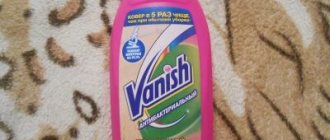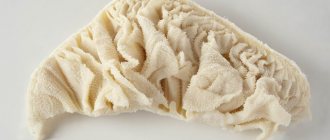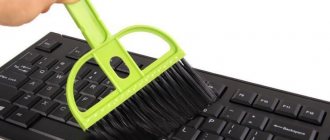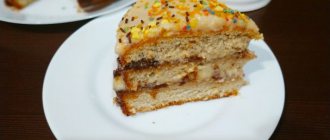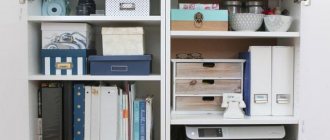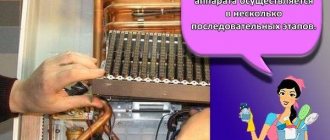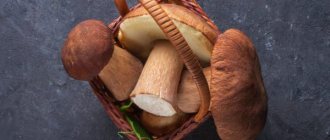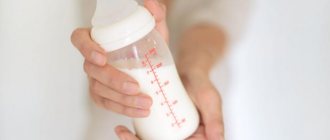How to clean old copper coins. Advice from experienced numismatists.
Restoring coins is a difficult job. Each metal from which a coin is minted, be it silver, gold, copper or iron, requires a special approach. Some are better not to clean at all, with others you can simply use a soapy solution, and for others you will need special cleaning products. Below we will tell you how to clean an ancient coin found in the ground.
How to clean coins
When cleaning any coin, it is important to remember: each metal has its own approach. If we talk, for example, about gold and platinum, it is better to do without cleaning at all or limit yourself to soapy water. No abrasives or hard metal brushes, just like with silver. Poor mechanical cleaning can leave scratches and the coin will lose its value.
There are 4 main ways to clean old coins:
- Chemical;
- Mechanical;
- Cooking;
- Electrolysis.
They are all used in different cases, at different levels of contamination, with different metals. For example, electrolysis is used only in cases where no serious damage or pronounced cavities are found on the coin. This is a fairly simple method. The coin is immersed in a slightly salted solution and an electric current is applied to it. At the end of the procedure, the coin takes on a new, fresh look, but defects such as mechanical damage, oxides and cavities may appear.
Mechanical cleaning involves the use of various tools. This allows you to qualitatively eliminate various types of contaminants. But it is important to remember: this is a very small and complex job, there is a danger of damaging the integrity of the metal of the coin. Dry cleaning is the use of various reagents, ammonia, acids, soda, household chemicals, detergents, soap, and washing powder. This method takes longer, since coins must be kept in solutions for several hours, and sometimes for several days. But this method is suitable for almost all metals.
Boiling is a way to clean up dirty coins, which involves immersing them in boiling water with the addition of soda, petroleum jelly or olive oil. Cooking is faster than dry cleaning, but you need to remember one important rule: for high-quality restoration of a coin, it is better to combine several methods.
How to Clean a Copper Coin
Copper was one of the first metals used to mint coins. Copper coins are well valued by numismatists and have their own characteristics. Copper coins are not resistant to corrosion, which must be taken into account when choosing a method for cleaning them. In addition, the appearance of a patina of dark green, brown or completely black is considered absolutely normal and even positive.
There is a misconception that patina, like other oxides, needs to be cleaned and removed. On the contrary, it is an indicator of the value of the coin and protects it from external influences, including corrosion. An even, dense layer of patina is an indicator of the quality of a copper coin. Removing it can significantly reduce its cost.
Dry cleaning involves the use of various means:
- Soap;
- Vinegar;
- Ammonia;
- Lemon acid;
- Ammonia.
Ancient copper coins are also put in order by electrolysis, boiling in soda and mechanically using various tools.
The reddish coating is removed by immersion in a five percent ammonia solution. Green scale (copper carbonate) - with a ten percent solution of citric acid, yellow scale - with acetic acid in the same proportion. To achieve the highest quality result after dry cleaning, coins can be boiled separately in a soda solution or distilled water. One of the main rules of boiling is that the liquid must always cover the coin by at least 2 cm. In order for the coin to be cleaned evenly, it is better to place it not on one side, but to place it leaning against the walls of the container.
An important and mandatory point after completing all stages of cleaning is drying the coin. The quality of drying of the coin determines its appearance. It is better to use only paper towels to remove moisture. Others scratch the coin and leave lint on it. The most ideal option is to place coins in drying cabinets. Some numismatists prefer to artificially cover copper rubles with a layer of patina to protect them from external damage, chips and corrosion. Over time, the coin itself becomes covered with patina, but there is no guarantee that the layer will be uniform. Therefore, playing it safe and taking care of its appearance in advance is the most correct decision. Procedure for applying patina:
- Dilute 50 g of copper sulfate and 5 g of potassium permanganate in 1 liter of distilled water.
- Heat the solution to 80–90 degrees.
- Place coins in the solution.
- Do not remove coins from liquid until a characteristic brown layer appears.
- Take out the coins and dry them in a convenient way.
- Apply a protective coating (alternatively, mix alcohol with benzene in a 1:1 ratio).
Another way to patina a coin is to place the coin in a 10% hyposulfite solution for 15 seconds.
Cleaning coins with special means
Special solutions, powders and pastes can be purchased in numismatic stores and via the Internet. If you follow the instructions completely, it is difficult to damage the metal.
Paste GOI
Chromium oxide paste is available in hardware stores. Universal cleaning and polishing material.
Apply the paste to your toothbrush and rub the coin. The paste should be washed with warm water and dried.
Cleans modern coins and bimetal well.
Pasta USSR
Has an alkaline composition, suitable for coins made of bronze, brass and copper.
Asidol-M
The paste consists of surfactants and abrasives. Suitable for cleaning all types of coins and metals. Use with caution on antique items.
Trilon-B
The product is in the form of salt powder. According to the instructions, mix with hot water and place the product in the liquid until completely cleansed.
Suitable for bronze, low-grade silver coins. Safety glasses will be required when working.
Nano-patina
The composition includes copper sulfate and acid. Suitable for all types of metal. Recommended for items found in the ground.
Leuchtturn
German liquids are considered one of the best in working with dirt, rust and oxidation on coins. Special reagents are selected for each specific alloy separately. There are compositions for copper, nickel, bimetallic and other coins. By the way, it was this company that developed the ideal composition for zinc coins. The product is sold in numismatic stores.
Shine Coin
A specially designed product for collectors. In addition to cleaning compounds, the line includes products to protect coins from corrosion, tarnishing, to add shine, a mirror surface restorer, and others.
Very important! When working with chemical compounds, it is necessary to use gloves and ensure that the room is well ventilated. Also be sure to follow the instructions!
How to clean an old coin
Sometimes even more serious means and methods are used for high-quality restoration of an old coin. One of these is Trilon-B, a special active cleaning agent in powder form that makes most insoluble metal salts soluble, thereby cleaning metal surfaces. The cleaner effectively removes silver, zinc and copper oxides, making it ideal for coin restoration. Trilon-B is a strong product that does its job - aggressively removes metal corrosion. But you need to be careful: if you overexpose the coin, serious damage may occur.
When used correctly, the acid eats away the oxides without affecting the metal itself - the coin remains in excellent shape. If you do not follow the proportions or the restoration procedure, cracks and pits will appear. The larger the oxide layer, the longer you need to keep the coins in the solution. You need to clean coins using Trilon-B according to a clear procedure:
- Prepare a 10% solution: mix 100 g of the substance with 1 liter of warm water.
- Immerse the coins in a container with the solution for 10–20 minutes.
- Take out the coins, rinse under water, and dry.
Washing coins is a very important step. Keeping it in solution means allowing the substance to destroy the metal of the coin. Drying follows the same procedure as with any other product.
Starting the cleaning process
We choose a cleaning method depending on what type of dirt we are dealing with. There are chemical and mechanical, in the second option we are talking about dirt, dust, earth and other contaminants that are cleaned mechanically without the use of special means. The first method involves a certain chemical reaction that will help wash the coin from oxide, green plaque or any other.
If you have not previously worked with the methods below, carefully follow the instructions and do not overdo it so as not to damage the product. Moreover, you should not change the recipe or come up with your own.
Cleaning from contaminants
At this stage we are talking about mechanical cleaning. Depending on what kind of metal we are dealing with and how dirty it is, we choose the cleaning method:
- A soap solution can handle minor stains; use it to remove dirt using a brush or an old toothbrush.
- In difficult cases, we act depending on the composition of the coin. You can use the methods given in the paragraphs below.
- If the pattern on the surface is not visible, put it in a soap solution for 10-15 minutes. You can use laundry soap. After this, using a toothbrush, carefully wash the coin directly in the water. Then we dry it.
How to clean a coin found in the ground
Often, when searching for old coins, they are found in the ground; such finds often resemble those from the USSR. Sometimes they lie there for years and the dirt has become so ingrained that it has become almost integral to the product. Cleaning such coins at home will be done by boiling.
You need to make a soda solution, one tablespoon of soda per glass. It is better to place the contaminated item in a sieve or something similar so that it does not lie at the bottom of the pan. Bring the water to a boil and leave to simmer for half an hour. Now turn off the heat source and let the water cool slightly. We take out the product and carefully clean it using a toothbrush or other soft brush. We carry out the procedure as many times as possible until the coin restores its normal appearance.
Cleaning with baking soda
In this case, we will clean coins from oxidation using ordinary soda, which will be used as an alkali. That is, the main task is not mechanical cleaning, but chemical cleaning. We make a regular soda solution and immerse the products there. The concentration of the solution depends on the complexity of the case; as a rule, add 1-2 tablespoons of soda to a glass of water. After a few hours, pull it out; if there is still plaque, remove it with a soft cloth and dry it.
You can make a kind of paste from soda and water. We put coins there for a certain time and periodically watch it so that the soda does not start to dry out right on the surface. After the procedure, remove and use a soft brush to clean all residues from plaque and oxide while simultaneously rinsing in water.
You can make your own cleaning products. To do this, we make a mixture of ammonia, soda and toothpaste. By closing it all in a jar it can be stored for a long time. Cleaning with its help is very simple, apply the mixture and wash with a toothbrush.
Cleaning a coin with soap
The basic method for cleaning an old coin involves using a soapy solution. We rub the soap shavings on a grater and soak them in boiling water so that a mixture somewhat reminiscent of jelly is formed. Place a coin there, cover and leave for 1-2 days. In difficult cases, add soda, 2-5% of the total mass of the solution. When time has passed, remove it. Rinse under running water and dry. Soak in alcohol and leave until completely dry.
Boiling down coins
Vaseline or vegetable oil is heated and a coin is immersed in a strainer for 10 minutes. Wash with running water and soap. Pour clean water into a vessel, immerse our coin in it, heat it to a boil and leave to cool. After the procedure, wipe the product dry.
Jewelry Cleaners
The best option for cleaning an old coin at home is a jewelry cleaner. It can be purchased at jewelry stores and workshops. This could be a napkin or solution. In the first case, you need to wipe the surface of the product. In the second, immerse the coin there for 5 minutes.
It is better to entrust valuable coins to professionals. It would be a shame to ruin an antique due to your own incompetence. The workshop will not only clean it, but also polish it and may apply an additional layer of protection.
How to clean coins at home
If you are planning to renew really expensive coins, take the time to use the services of restoration professionals and entrust the cleaning to them. If you are new to this business, you don’t need to purchase special cleaning products and tools to freshen up your coins and their appearance. Everything you need is in your kitchen. Even many experienced numismatists put their coins in order using improvised means. You might not even realize that some of them turned out to be an excellent tool for cleaning coins. In your home you will find:
Vinegar and citric acid. Take vinegar or dissolve 100 g of citric acid in 1 liter of water. Place a coin in a small container. Be sure to ensure that it is completely submerged in the liquid and does not protrude above the surface to prevent streaks or uncleaned areas. After 5-10 minutes you can take out the coin. Don't forget to rinse it under warm water. Instead of citric acid, you can also use regular lemon - just immerse the coin in the pulp for a while.
Baby soap. A very simple method, but despite this, it may take more than one day. Just take baby soap, rub it and pour boiling water over it to create a thick soap paste. When it has cooled, immerse the coins in it, occasionally checking how clean they are. Keep in mind: Some coins can take a day to clean with soap paste, while others can take up to several weeks.
Ammonia. A fairly harsh, but still effective method for cleaning coins made of copper. Ammonia is quite an aggressive agent for this metal. If you do not want to spoil the coin or damage the metal, you need to handle it with extreme caution. The coin must be immersed in ammonia for 15–20 seconds, then rinsed thoroughly. To reduce the risk of damage to the coin, you can use a solution rather than pure ammonia.
Coca Cola. This drink, thanks to the presence of phosphoric acid in its composition, has long been known for its properties as one of the effective rust removers. If you use cola in the restoration of coins, it can be an excellent means of cleaning them. To do this, place the coins in a container with a drink, then rinse with water and dry.
Handy tools. If you decide to use special tools and mechanically remove colored plaque and dirt, use items that can be found in almost every home: a paper napkin, toilet paper, a soft toothbrush, foil, an eraser or a toothpick. They do not damage the metal, and cleaning can be carried out as carefully as possible.
